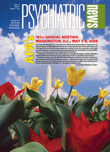You might call it “tit for tat.” During the War of 1812, the British burned the White House and other public buildings in Washington, D.C. But a few years later, the Americans got even in an unexpected way—British scientist James Smithson bequeathed money to the United States for the “increase and diffusion” of knowledge. So in 1846, the Smithsonian Institution was established in Washington, D.C.—not in Britain.
In the 162 years since, the Smithsonian Institution has mushroomed into a collection of fabulous museums. Today they are among the marvels of the nation's capital and, most notably, are open to the public at no charge.
In the National Museum of Natural History, you can get up close and personal with ancient dinosaur bones and stuffed predators. A new exhibit—“Butterflies and Plants: Partners in Evolution”—showcases live butterflies and plants in an enclosed pavilion. A zoo of live insects can be found on the second floor. There, volunteers conduct tarantula-feeding demonstrations, work with live insects that visitors may touch and hold, and answer questions. A film in the museum's IMAX theater offers “Sea Monsters 3D: A Prehistoric Adventure.” It weaves together a story about an ancient and mysterious ocean world containing some of the most formidable creatures of all time.
The National Air and Space Museum maintains the largest collection of historic air- and spacecraft in the world, making it the most popular Smithsonian museum. You can view the original Wright 1903 Flyer, Charles Lindbergh's Spirit of St. Louis, the Apollo 11 command module, and breathtaking IMAX films about flying. You can also touch a lunar rock, and you can visit the Albert Einstein Planetarium. It has been upgraded to include a Sky Vision dual digital projection system and six-channel digital surround sound, so that you'll be not only overwhelmed with spectacular images and spine-tingling sounds, but also actually feel as if you are zooming through the cosmos.
And if that is not enough to walk your legs off, flood your senses, and stuff your brain with knowledge, you might also want to stop by some other Smithsonian museums, such as the Anacostia Community Museum, Arthur M. Sackler Gallery, Freer Gallery of Art, Hirshhorn Museum and Sculpture Garden, National Museum of A frican Art, National Portrait Gallery, National Postal Museum, and the National Zoo.
In the Anacostia Community Museum, you can experience a living-history presentation of Frederick Douglass, a noted 19th-century black social activist who lived in Washington, D.C. Or you can view an environmental video about restoring the Anacostia River and the depressed riverside communities fronting the river.
In the National Postal Museum, you can see one of the world's largest collections of stamps, postal-history material that predates stamps, vehicles used to transport mailboxes and mailbags, and postal uniforms and equipment. ▪

